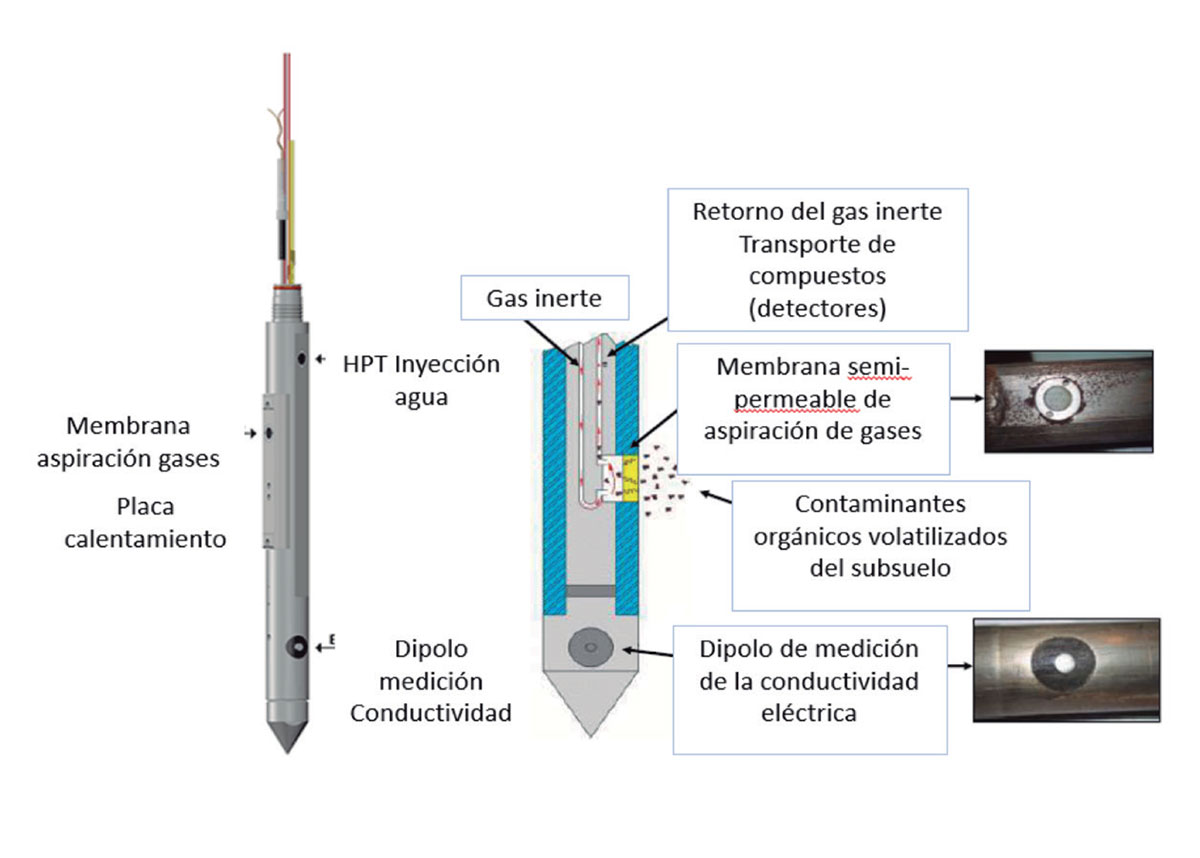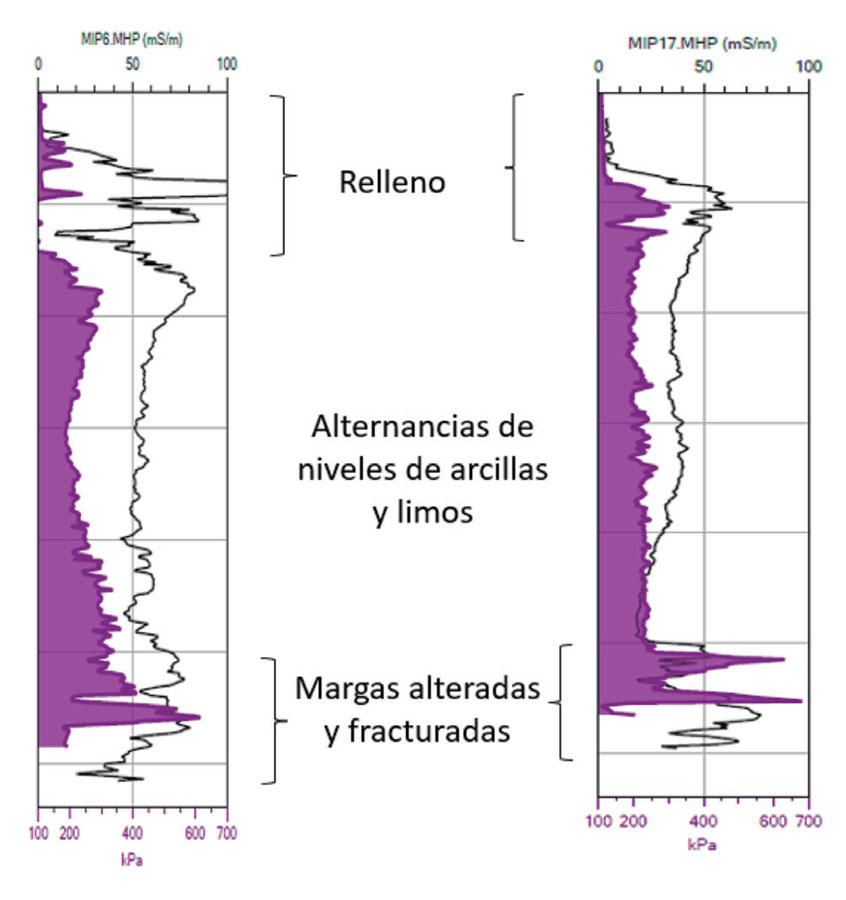ARIS
HIGH RESOLUTION TECHNOLOGIES FOR CONTAMINATED SOILS MANAGEMENT
DENSE INDUSTRIAL FABRIC AND INTENSE HISTORICAL ACTIVITY HAVE HAD AN IMPACT ON SOIL IN THE BASQUE COUNTRY, whose Circular Economy strategy seeks to reduce waste generation and minimise the management of contaminated land in landfill sites. Legislation prioritises soil quality monitoring and forces organisations responsible for land contamination and/or remediation to investigate and remediate soil. Conventional methods require boreholes to be drilled for soil and groundwater sampling, and samples are then analysed in the laboratory. The MIPHPT (Membrane Interface Probe & Hydraulic Profiling Tool) technique consists of directly obtaining information about the subsurface by introducing an instrumented probe. As the probe advances, the physical parameters of the subsoil (conductivity and permeability) are measured and recorded, and volatilisation organic pollutants (volatile and semi-volatile) contained in the soil is triggered. Pollutants are later analysed on the surface by means of portable detectors. This technology provides ongoing results and a much larger volume of data than conventional techniques.
TALANTIA, focuses its activity on protecting and improving the quality of the environment through the implementation of new technologies, especially in the management of contaminated soil and groundwater. TEKNIMAP is a company specialising in the fields of environmental consultancy, inspection and monitoring.

DRIVING FACTOR


 OBJECTIVES
OBJECTIVES
- Evaluate the MIPHPT technology in the Basque Country, contrasting the results obtained with respect to conventional technologies, and validating its field of application and prospects.
- Detect and assess soil and groundwater contamination in situ, to complement conventional investigation methods.
- Optimise conventional borehole locations.
- Reduce laboratory analyses.
 RESULTS
RESULTS
- The technique is both operational and fast, as the equipment bores holes at a higher speed than traditional soil analysis equipment, handling a greater volume of data in a much shorter time.
- The lower limit of detection (LLOD) of the field method is not a problem, as no laboratory positives have been recorded in the field.
- Differentiation of lithologies by means of electrical conductivity and injection pressure gauges allows a high vertical resolution of the different sections in terms of permeability and clay content, and both parameters are essential to define the migration of contaminants.
- The technology does not directly address the regulatory need to certify compliance with reference concentrations in relation to uses, which has limited the emerging demand for these services in the EU.
 CONCLUSIONS
CONCLUSIONS
- The implementation of MIP HPT Direct Push tools in the Basque Country would have a wide application potential given that industrial areas are located in favourable areas for its use. A plant in the Basque Country can cover a large part of the Iberian Peninsula and southern France.
- The increased volume of data offered by the technology reduces the uncertainty inherent in the heterogeneity of the subsurface, and, in the remediation phase, accurately delineates affected areas in 3D and facilitates highly efficient in-situ treatments. This minimises and even avoids excavation and landfill management of soils that can be reclaimed, thus supporting the Circular Economy Strategy.
- The subsequent phases are oriented towards the use of MIPHPT technology in in-situ remediation, by applying oxidising and/or reducing compounds and monitoring effectiveness. Market research and the contribution of the administration will also be explored in depth. It would be interesting to transfer the technology to an operating company and to market, and to raise awareness of the method among potential policy makers, developing a plan to communicate the results.
ENVIRONMENTAL
TECHNICAL
ECONOMIC
COMMERCIAL
ON THE MARKET

